1.1. The types of wool
Camel. Is the soft and rough. The stiffness of the coat depends on the age of the camel. Natural color from light to dark brown allows you to use yarn without dyeing.
The mohair. Wool goats bred in Spain, South Africa, America, In our country it is obtained from goats of the Orenburg breed. Has a long, thin yarn with a silky luster. Join for mating with a base of wool or synthetic fibers.
Angora. Angora rabbit hair. Knit with a base of wool, cotton or silk thread.
Merino. The wool of the Merino sheep bred in Australia. Use binding without Foundation.
1.2. How to choose yarn
Yarn is sold in balls, Hanks and cones.
A ball of thread, wound a ball (figure 1).
A ball can make so that from it you will be knitting with two strands: one strand goes from the edge, and the other from the centre (figures 2-6).
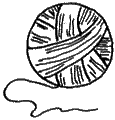
Figure 1. Tangle
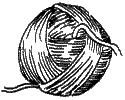
Figure 2. A tangle with two threads
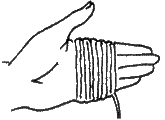
Figure 3. The winding of the coil with two strands
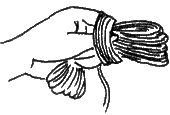
Figure 4. The winding of the coil with two strands

Figure 5. The winding of the coil with two strands

Figure 6. The winding of the coil with two strands
A coil (pasma) is filament wound on a special device (figure 7).
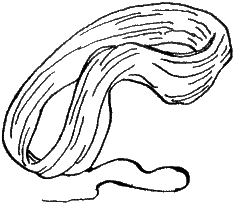
Figure 7. A coil (or pasma)
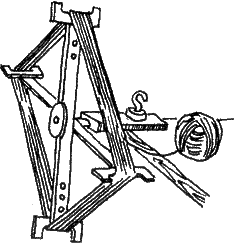
Figure 8. Fixture for stretching threads
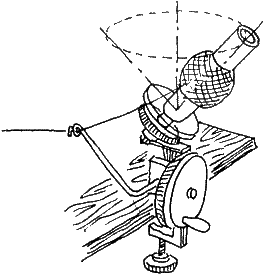
Figure 9. Device for winding threads into skeins
Bobbin - thread, wound on a hollow cylinder (figure 10).
Choose the yarn should be soft, elastic and smooth. On the label of a coil refers to the number and length in meters. Don't throw it away, while thing to the end is not connected. Yarn may not be enough and the number on the label you will select the identical.
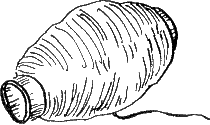
Figure 10. Bobina
1.3. Wash wool yarn
When preparing to wash the skeins not tight bandage in 2-3 places. Wash in warm soapy water or in the foam of powder. It is not recommended to RUB the yarn. Lower the skein into the water and lift, holding it by hand. To degrease, add a few drops of ammonia. After washing, rinse the yarn in water with vinegar (1 tbsp vinegar per 5 liters of water), but do not remove, otherwise the hair may be matted.
It is not recommended to wash in the previously used water. The washed skein roll up in a clean, dry cloth, removing excess water. Then hang and turn regularly for even drying. Yarn is not recommended to iron after drying, as the fur under the iron loses its hairiness. After washing and drying the yarn is wound in balls. The ball should be soft, if it gets tight the thread will stretch.
When washing old wool yarn to the bottom of the ball tie a small weight (figure 11).
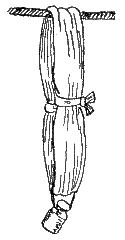
Figure 11. Drying coils with the load
1.4. The color of the threads
Being able to dye, bleach and repaint, you can always get the yarn the desired colors. Each fiber is a dye, organic or chemical, so getting to the painting, it is necessary to determine whether the filaments of impurities.
Woolen yarn burns, emitting a smell of burnt bones. Fire slowly moving through it, and at the end of the dark is formed, the sintered bead, which collapses from the touch.
Cotton, linen and viscose filament burns with a bright flame, with the smell of burnt paper. After combustion, the ash remains. The ball on the end of the thread is not formed.
Synthetic filament is not burning, and melted. At the end of the formed ball, which is difficult to crush.
Defining the structure of the material, pick up the dye.
1.5. Chemical dyes
Using aniline dyes, it is necessary to observe several conditions: when painting, use an enamel bowl; before painting the wool should be soaked in warm water for 30-40 minutes. Before painting powder diluted in a glass container, stir well and allow to settle for 15-20 minutes (the proportions indicated on the package). After this, the solution is filtered through cheesecloth and add salt or vinegar. Wool immersed in the solution, which is brought to a boil. When the hair floats to the surface, she's turned a wooden stick, dipping into the solution. If the staining is normal, the solution brightens, wool absorbs dye. Since the boiling point until the end of the staining should go 25-40 minutes. After that rinse several times changing the warm water. At the last rinsing, add the vinegar (500 g fur 5 liters of water, 1/2 Cup vinegar). The wool is dried are suspended.
Adding a powder of the dye in different proportions, you get the following colors:
"Bordeaux". 3 bags Bordeaux to connect with 1 set of crimson paint. Each paint to dissolve separately, then mix. The solution boil for 20-25 minutes.
"Cherry". 3 pack Bordeaux to join with 1/5 of a package of purple or blue paint.
"Young greens". 4 pack green take 1/2 package of yellow paint.
"Dark green". 4 pack green to join with 1/5 of the package of blue paint.
"Sea wave". 1 package of "electric" to connect to 1/2 pack cornflower or green.
"Terrakon" (brick). 1/3 package of brown combine with 2/3 of a package of orange paint (dark color). Light color get, coupling 1/4 package brown with 3/4 of a package of orange paint.
"Beige". Take 50 grams of Indian tea, brewed in 1/2 liter of boiling water. The resulting solution was drained. The operation is repeated 2-3 times. The vinegar in the solution is not to add.
"Pink." 1/2 bundle of red combine with 1/2 tutu lilac paint.
1.6. Organic dyes
Plant substances with fiber does not directly contact, so before painting should be treated with salt. There are also stationary-chemicals, they are usually sold in stores and are used for obtaining light colors, dark for darker. 100 g of the fibers take 10 grams of disinfectant, dissolved in water and added to the water in which it is provided to treat the material.
The fiber is pre-soaked in warm water for uniform wetting. Heated to 30 degrees and allowed to settle. Fiber staining is periodically inverted, and then removed from the treater, and not rinsing, dipped into the liquid dye. From a single plant using different treatment, you can get from 10 to 20 tones of dyes. Dyes plants it is best to dye wool fibers.
For painting you can use the whole plant (leaves, berries, husks). They can be eaten fresh or dried. Fresh plants give a bright tone. Plants cannot be dried in the sun, since some dyes may fade. They are dried in a draft in a shady place. Need for staining the number of plants believe by weight of the fiber. 100 g of the fibers take 100-150g of dried plant or 250-300g fresh. The plants are soaked in warm water for 6-12 hours, then boiled, filtered, poured back into the pot and paint potraviny yarn. The broth should be warm. It is heated along with the material and bring to a boil.
Dyed fiber is allowed to cool in the liquid dye, then wash in the suds and dried. If the fiber is turned too dark it can be lightened by adding a little acetic or tartaric acid. To obtain a melange of painted areas skeins in different colors. The technique of dyeing the same, but the skein is soaked in a staining solution not entirely, and parts. When painting this method should not be tight and bind the yarn. The tight tie dye does not penetrate and appear not stain.
Here are some recipes of organic dyes:
Yellow. Can be obtained from the peel of onions, marigold flowers, chamomile, leaves of tomatoes, yellow maple leaves and celandine.
Green. Produced from potato tops, carrot, red beet and bark of the tree.
Black. Get from green tea and the bark of the black alder.
Sand. Produced from dried Linden flowers, dried peppermint, bark and leaves of hazel.
ATTENTION! In order not to spoil the whole skein of wool, first it is necessary to paint the model.
1.7. Repainting yarn
Washed yarn can be repainted in a brighter or different tone colors. In matter, light or dark base color, repainting is possible to achieve a tone of the same strength or darker (update). If you ship products or filaments should take into account the basic tone of previously applied paint. If the tone is white, can be painted in any color, but if the yarn is slightly yellowish, will never get a pure light blue, it will always be green. Of the 3 primary colors (blue, red and yellow), you can get all the desired tones.
Mixing yellow with blue you get green. Green color can be yellowish or bluish tint depending on the concentration of the dyes. Mix blue with red you get purple, blue or reddish tinge. Mixing yellow with red, you get orange. Combining these colors with the basic colors, you can get a new colour shades.
For example: mixing green with red, get a warm brown, blue and orange - cold-brown.
1.8. Bleaching yarn
If the yarn was painted darker than required, uneven or stained, you can bleach: baking soda (100 g of sodium in 500 g of wool), soda ash (2 tablespoons in 5 liters of water). The bleaching process is 10-15 minutes in hot water. Water to a boil not to bring. We can bleach and ammonia (100-200 g of alcohol. 100 g of soap chips in 10 liters of water).



